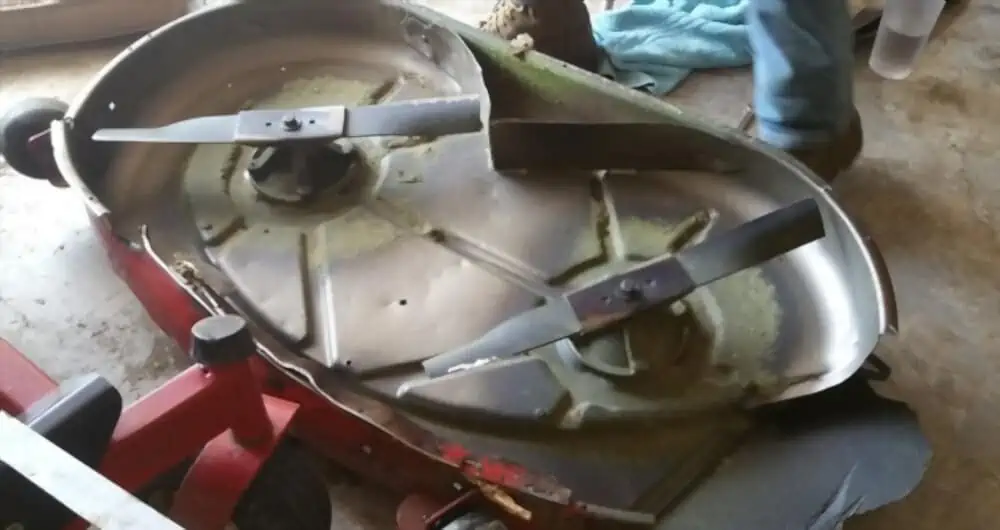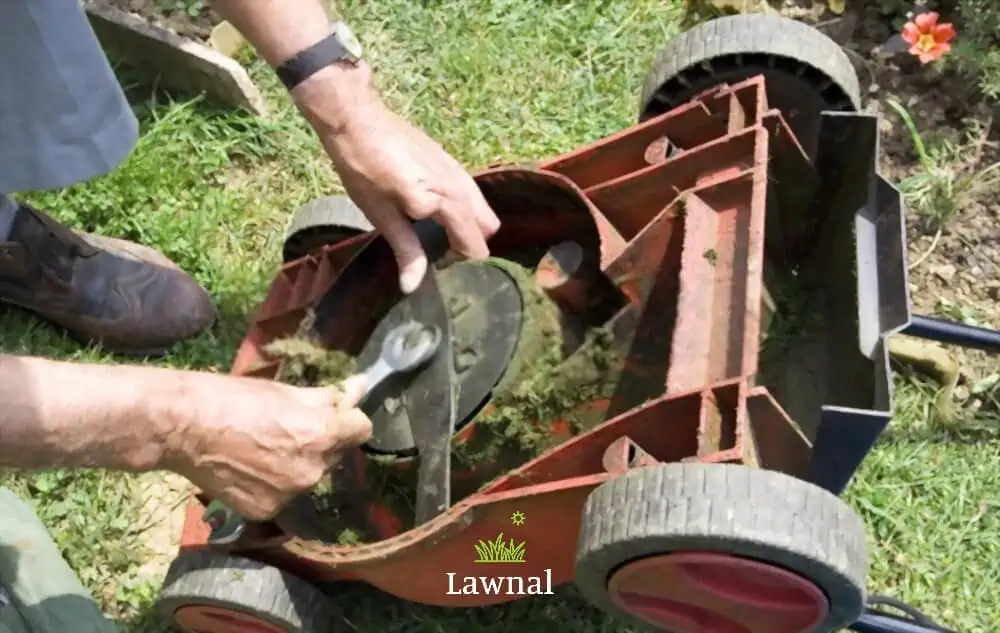A new blade can improve your mower’s performance and the cut’s quality. Some homeowners frequently change their blades, while others take up to three years to get it done. Whatever the preference, the correct blade is critically essential. So, are lawn mower blades universal?
When a mower blade gets bad for various reasons, does one head to the market, purchase one, and organize a swap? In this article, you will learn whether a mower blade must have an exact fit and torque to the manufacturer’s specifications. Or whether you don’t have to bother about a precise fit.
Are Lawn Mower Blades Universal?
No, they aren’t universal. They are tailored specifically to the manufacturer’s requirements and stipulations for lawnmowers.
Most people make the mistake of thinking the blades are the same and go on to fix the wrong ones, which can lead to accidents and inefficiency. The blade’s size and shape must match the mower’s deck size and shape to ensure proper performance. The blade should also fit with the mower’s belt or drive system.
The Best Mower Blade For You
Finding the right blade for your lawn mower is not at all technical. All mower blades come with an OEM number known as the “Original Manufacturer Number.” If the blade has an OEM number, you can find the same blade from the lawn mower manufacturers.
Type the OEM number into a search engine. It can be Google, Amazon, or the online store from which you bought the lawnmower. The result will be displayed on your screen, and you will see the blade type.
If you need help finding the OEM number, here are some other ways to figure out the lawn mower blade you need:
- The type of lawnmower: Lawnmowers were not manufactured to have the exact blade requirements. For instance, a push mower typically uses a different breed than a riding mower.
- Width of the blade: The width of the blade should match the width of your mower deck. The blade should not be wider than the deck opening.
- The material of the blade: Lawnmower blades are made from high-carbon steel. Consider the type of grass you will be dealing with and go for a blade material that is appropriate for it.
- The shape of the blade: The blade shape will determine the type of cut you get. A coffee blade, for example, can help provide a cleaner cut.
- The cutting deck size: This will determine the length of the blade. You must measure the deck size to determine the correct blade length.
- The blade center hole size: The center hole side of the blade must match the size of the blade adapter on your mower.
- Blade rotation direction: Ensure you get a blade that rotates in the correct direction for your mower.
If unsure, take your mower to a professional for blade replacements.
A Mower Blade Dimensions
The shape, orientation, and measurements must be considered when taking lawn mower blade dimensions. However, you also have to measure the hole in the blade. The hole is where the blade will be fixed, so it needs to be carefully considered.
Here is how to measure it:
- Remove the blade before measuring: Remove the blade from the mower. This makes it easier to access the holes and take accurate measurements.
- Measure hole diameter: Use the caliper or a micrometer to measure the diameter of each hole in the blade.
- Measure the center-to-center distance: Measure the distance between the centers of the holes. This would give you the center-to-center distance, which is essential for determining the proper size of the blade bolt.
- Check the thread size: If the blade has threaded holes, use a thread gauge or a screw gauge to determine the thread size of each hole. This way, you get the proper size of the blade bolt.
- Note any unusual features: If the holes have unique shapes or step toes, note this. Some blades may require special hole bolts to fit correctly.
If you follow these steps correctly, you can accurately measure the holes on the lawn mower blade, which will help ensure the blade fits securely.
Types of Lawnmower Blades
- Standard Blade: Standard lawn mower blades are typically made of steel or alloy materials designed to cut grass effectively and efficiently. They are usually mounted on a rotating blade shaft and powered by the lawn mower’s engine.

The size of the blade depends on the size of the mower and the type of grass being cut. So, standard blades typically come in a length of 21-22 inches and have a cutting edge that ranges from 1.5 to 2.5 inches wide.
Further, the blades must be adequately balanced to prevent vibrations that can cause damage to the mower or operator. Regular maintenance, such as sharpening, is crucial to keep the blades in optimal working condition and ensure a clean, even cut.
- Bagging Blade: Long and straight, designed to create a cleaner cut and collect more clippings in the bag.
- High-Lift Blade: High-lift blades for lawnmowers are designed to increase the lift of grass clippings, providing a cleaner and more efficient cut. These blades are typically taller and have a curved design, allowing them to grab and lift taller grass while circulating air to prevent clogging. You get a better-looking lawn with fewer clumps of grass and more evenly cut blades.

High-lift blades are suitable for various lawn types, particularly those with thick or dense grass. However, they can cause a decrease in mowing speed and may not be as efficient in handling very wet or heavy grass. When choosing high-lift blades, you must consider your lawn type and the type of mower to ensure a proper fit.
- Universal Blade: Fits multiple brands and models of lawnmowers and can be used for standard or specialized cuts.
- Mulching Blade: Mulching lawn mower blades are designed to chop grass clippings into smaller pieces and redistribute them back onto the lawn as a natural fertilizer. They are different from regular mower blades as they have specific curvatures and cutting edges that create a high-speed vortex that cuts and recuts the grass until it is fine enough to decompose quickly.

Mulching blades save time by not having to stop and empty the grass catcher and help maintain a healthy lawn. To get the best results, use a mower with a high-performance engine, keep the blades sharp, and mow regularly at the recommended height.
When purchasing mulching blades, ensure they are compatible with your mower model and of good quality for optimal performance.
- Fusion Blade: A combination of standard and mulching blades, providing a clean cut and efficient recycling of clippings.
- Gator Blade: Gator lawn mower blades are a type of high-performance mower blade designed to provide a superior cut compared to standard blades. They are made with unique geometry and hardened steel construction to increase durability and reduce wear. The teeth on Gator blades are angled and spaced to maximize grass lift, resulting in a clean and precise cut.
Final Words
Now that you know that mower blades are not universal and can vary depending on the mower’s make, model, and size, it’s important to carefully check the specifications before purchasing a replacement blade. That is a sure way to ensure compatibility.
Using the wrong blade can damage the mower and cause poor mowing performance. Always check the specs of your current mower before heading into the market for the ideal change.






